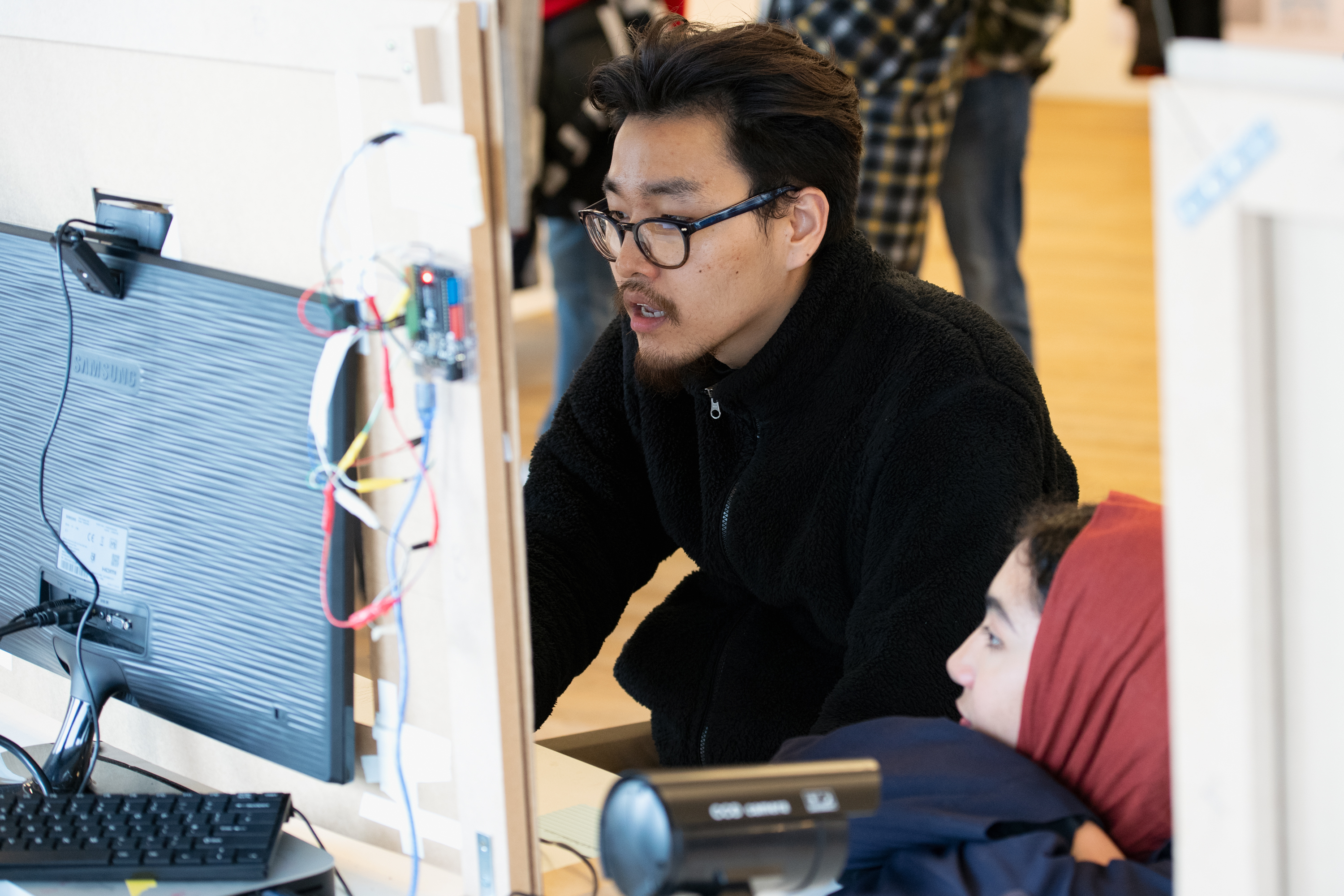Welcome to Happyland

So let me tell you about the one where I built an emotion recognition machine about the dangers of AI surveillance
COLLABORATION with the Digital Maker Collective and CRIN
Role: Project leader, creative producer, coding, machine learning, workshop design, social media content
Softwares: Python, Photoshop, InDesign, Arduino, OpenCV, Processing
Exhibited at Tate Exchange, Tate Modern, London (2020)
Stepping out of comfort zone: 🌶🌶🌶🌶🌶🌶🌶🌶🌶
Photography by Alex Wojcik
Brief: Introduce AI, machine learning, surveillance and children’s rights to the wider audiences in an approachable and interactive way
Our solution: An installation of 4 interactive ‘check points’ which contains a mix of facial, image and body recognition and deep fakes.
In March 2020, CRIN joined the Digital Maker Collective at the Tate Modern’s Tate Exchange to explore the intersection between art schools, technology and social good at the event ‘UNI2UNICORNS’.
For this year’s event, we developed a series of workshops and talks introducing the general public to children’s rights and the digital environment, including a panel on the ethics of children’s data and a panel on surveillance, facial recognition and its dangers. The installation was split in different activities exploring a topic each with each step being a ‘security measure’ for audiences to complete in order to receive a passport visa to Happyland.
Our biggest concern was educating folks on the concepts of AI without bashing it entirely as some evil invisible force which trumps human rights. Throughout the week-long event, we introduced the tool on a basic technical level, then talked about its dangers and finally, how they can be harnessed for creative outputs and social good.
General summary video from the event ︎︎︎




We introduced facial recognition to the audience by having the user sit in front of a webcam and wait until the machine scanned their emotion, which it classified as either ‘Happy’ or ‘No Emotion detected’. If they were classified as Happy, they would get to pass to the next security gate. If not, they were labeled as having ‘No Emotion’ and thus denied entry until they were classified as Happy.



Once they have passed the emotion recognition stage, we participants were introduced to image recognition. They had to show an image of a cat or draw their own cat and have Google’s Teachable Machine differentiate a real cat from a drawing. Some people were able to fool the machine by drawing realistic cats with the same colour palette found in the “real cat” database. Google’s Teachable Machine is an online free and accessible tool for users to create machine learning models with no coding required, which introduces everyday audiences to databases and machine learning in a fun and effective way.

3. Body recognition game
We introduced the public to body recognition through an interactive game, where participants had to choose 3 body stances and recreate the positions using PoseNet, an open-source body detection tool.


Once the audience members have gone through each step, they receive a stamped visa passport granting them access to Happyland, where they meet an AI-generated citizen from Happyland: a baby. The baby, whose face is AI generated, is put into the MugLife app, where participants can manipulate the baby’s facial features to make her say or do things such as lick her lips and close her eyes. This crucial step confronts the user to a possible and realistic and sometimes, horrific outcome resulting from unregulated data collection (specifically facial and body recognition) which can also affect them or their own children.
This was my first time mixing Arduino with Python, TensorFlow and OpenCV. I am not very good at it, pretty much mushed two GitHubs, this facial detection one by Maurya Ritesh and this music and mood recognition code by Spidey20 together and edited it so it was communicating with my Arduino Uno via the right port and triggered the right audio and LED. I am not trained formally in programming so it was a huge learning curve but I am hungry for more!

Me alongside Privacy International, Big Brother Watch and CRIN at my first panel ︎︎︎


Some designs for the event + social media to promote the event ︎︎︎
Read about the event here for more information.